Standing at an elevation of roughly 8000 feet above sea level, Kargil is located between the Zanskar Mountains and the Himalayan ranges. It acts as an important access point to Ladakh when one is travelling on the road from Srinagar. The town is typically endowed with a mixed population of Dard and Tibetan ethnic groups. The weather is predominantly dry and cold, with excessively cold winters and moderate summers. With these places to visit in Kargil, check out the detailed background information about each spot.
10 Places To Visit In Kargil
Kargil is a town in the Ladakh region, famous for its beautiful sceneries, interesting past, and variety of cultures. Let us look at the remarkable places to visit in Kargil.
1. Kargil War Memorial
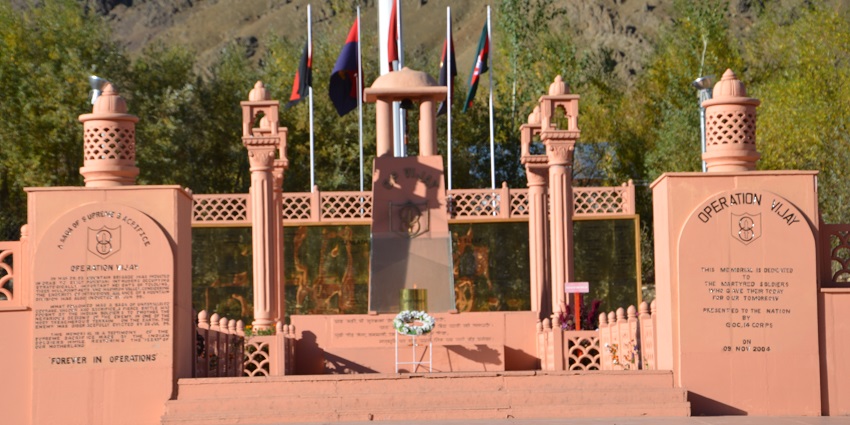
Photo: Darshancg / Wikimedia Commons
The Kargil War Memorial, situated at Dras in Ladakh, is a heartfelt dedication to the memory of soldiers who fought and died in the Kargil War of 1999 between India and Pakistan. The Indian Army built the memorial with pink sandstone carrying the names of over 500 martyrs. Other noteworthy features include the Amar Jawan Jyoti, an eternal flame signifying the spirit of the heroes who never perish, and the Vijaypath, which is a ceremonial gate adorned with flags and leads to the memorial. Also, the place has a display gallery that includes memorabilia, pictures, and tales of soldiers who participated in the war.
Timings: 10 AM – 12 PM, 2 PM – 5 PM
Best Time To Visit: April to October
Suggested Read: Things To Do In Nubra Valley
2. Mulbekh Monastery
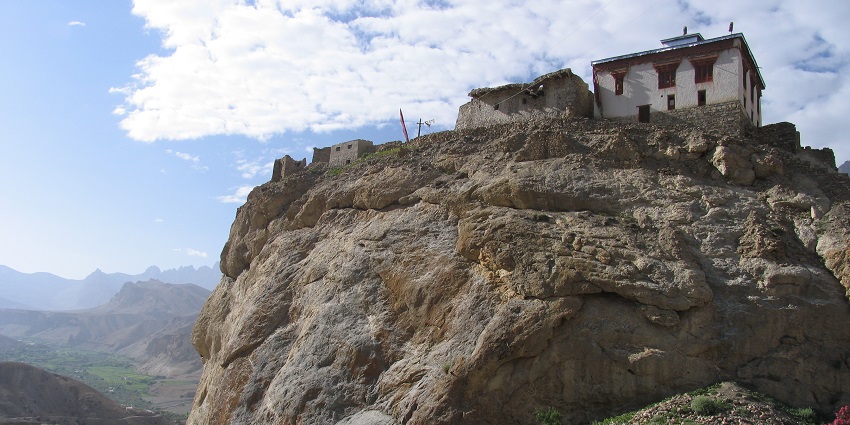
Photo: Jparande / Wikimedia Commons
Located about 11,495 feet above sea level along the Srinagar-Leh Highway, the Mulbekh Monastery is known for having a massive thirty-foot statue of Maitreya Buddha. It is one of the few monasteries that adhere to both Buddhism and Shaivism. Carved from a single stone, the monastery is made up of two gompas: the Serdung Gompa, occupied by the followers of the Drukpa sect, and the Rgaldan-se Gompa, occupied by the followers of the Gelugpa sect. Different structures and rooms tend to include lovely paintings, old Kharosthi writing mounted on walls, a big prayer wheel and many more that make the ambience tranquil.
Location: Mulbekh Village, Shargole Block, Kargil District, Jammu & Kashmir
Timings: 7:30 AM – 9:30 PM
Entry Fee: ₹30
Best Time To Visit: May to September
3. Shia Mosque
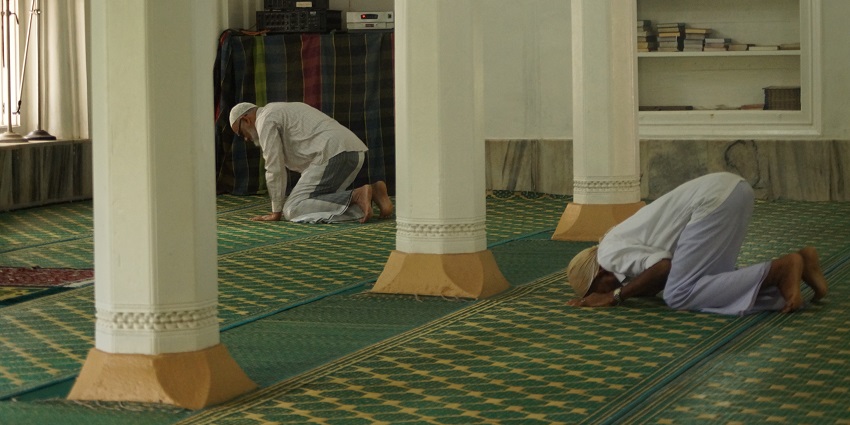
Photo: Roshan B Shetty / Wikimedia Commons / Image For Representation Only
The Shia Mosque is centrally located in Kargil town and has gained popularity because of its beautiful architectural designs, which include sophisticated wooden floors and elegant prayer halls. The mosque is majorly used as a place to worship by the local Shia Muslims and contributes greatly to the way of life and culture of people in that region. The visitors to the mosque can also appreciate the exceptional architecture which features several ladakhi aspects as well as Islamic designs. The inside is calm and fosters thoughts and tranquility which is ideal for those who are curious about the area and its people.
Location: Kargil town, easily accessible from the main market area
Best Time To Visit: During prayer times (especially on Fridays)
Timings: Dawn until dusk
Suggested Read: Things To Do In Leh To Seek Adventure And Beauty Amidst The Mountains
4. Hunderman Village
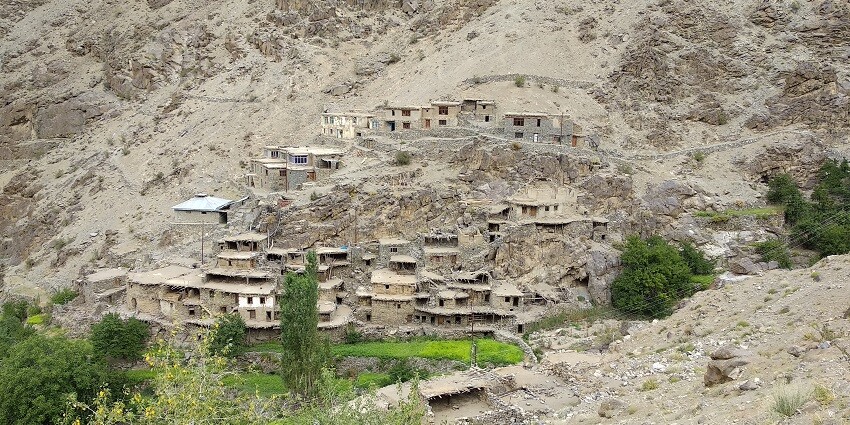
Photo: Mr. Seewan / Wikimedia Commons
Hunderman Village is renowned because of its historical importance as it was, for a long time, a part of Pakistan before the Indo-Pakistani War in 1971 when India managed to integrate this territory with its own. Traditionally built mud brick houses and beautiful mountains surround Hunderman. A major tourist attraction in Hunderman is the Museum of Memories which displays old objects from the village such as old cooking pots, worn out and rusty jewellery as well as decor from different wars. The place shows the war and how it affected people, while also showing the hope society managed to retain.
Location: Approximately 10 km from Kargil town
Best Time To Visit: April to October
5. Kargil Bazaar
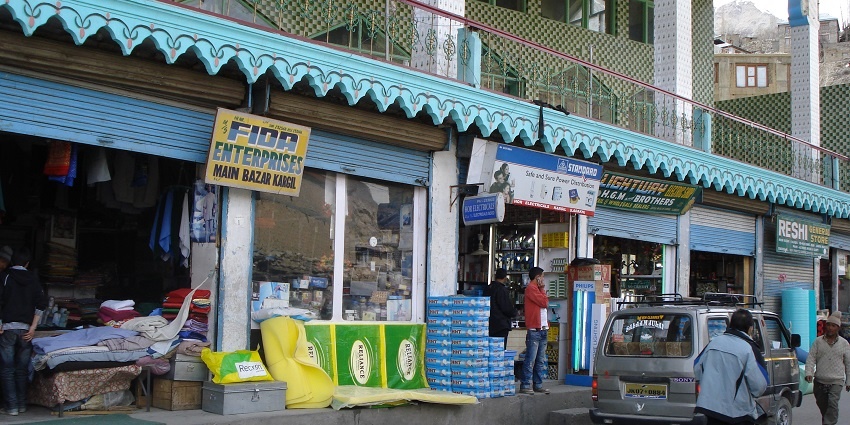
Photo: Kkkishore / Wikimedia Commons
Kargil Bazaar is undoubtedly one of the major attractions of Kargil and provides an excellent shopping opportunity that brilliantly integrates the local culture. The bazaar bears a strong historical signature and is an architecture of many styles including Ladakhi, Balti, and Central Asian. Tourists can find shops internalised in selling native products such as traditional pashmina shawls, or any woollen wear as well as Tibetan Traditions of prayer wheels and thangka arts and things. Also, the bazaar is among the tourist places in Kargil to be visited for local edible items such as dried apricots and apricot jams that could be brought as gifts.
Location: Central Kargil
Best Time To Visit: April to October
Timings: 9 AM – 7 PM
Suggested Read: Enhance Your Vacation With These Things To Do In Ladakh
6. Munshi Aziz Bhat Museum
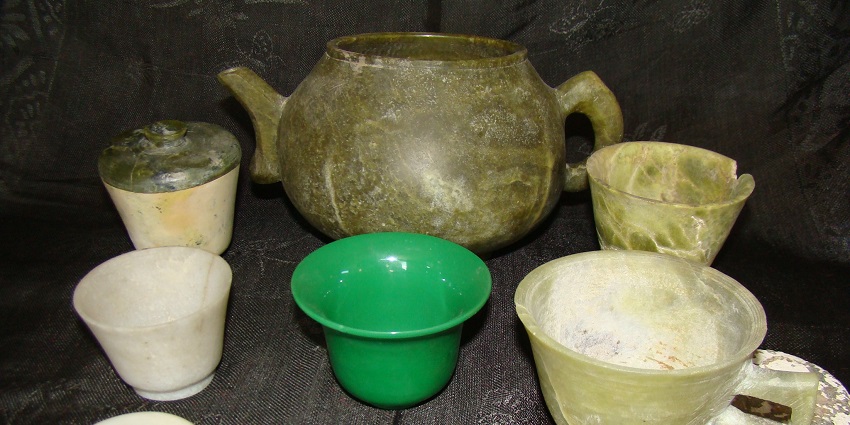
Photo: Kargilation / Wikimedia Commons
The Munshi Aziz Bhat Museum at Kargil is an extraordinary gift of architecture and institution to the people focusing on the memory of Munshi Aziz Bhat who played a very active and successful role in the silk route business. The museum was founded in 2005 to contain a vast pool of objects regarding the trade between India and Central Asia that flourished during the 19th and early 20th centuries. This kind of museum enables visitors to see different types of artefacts made up of everyday goods, coins, ornaments, fabrics, and manuscripts used by traders or travellers on the ancient silk route.
Location: Gulzar Hussain Munshi’s residence, 147 Munshi Enclave, Lankore, Kargil
Best Time To Visit: April to October
Timings: 8 AM – 8 PM
7. Zojila Pass
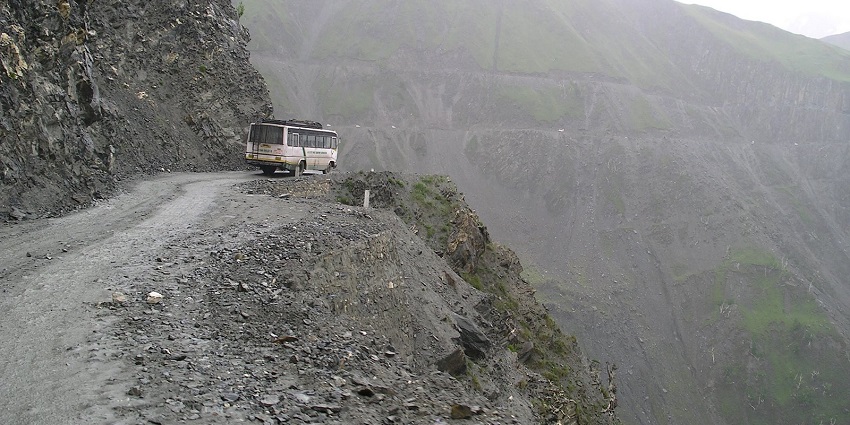
Photo: Yogeshgupta26 / Wikimedia Commons
Zojila Pass also called the “Mountain Pass of Blizzards” is a high pass in Kargil district within the union territory of Ladakh, it is situated at an approximate altitude of 11,650 feet (3,550 meters). This strategic pass links the Kashmir Valley and Ladakh and forms a part of the ancient Srinagar-Leh Highway (NH-1). The pass is popular due to the adventurous abrupt inclinations and sharp turns it has and as a result, bikers love riding on it. However, it also remains off-limits for almost six months every year because of excessive snow in late October and early May.
Location: Approximately 9 km from Sonamarg
Best Time To Visit: June to October
Suggested Read: Places To Visit In Leh For A Refreshing Retreat In Nature’s Lap
8. Dha Hanu
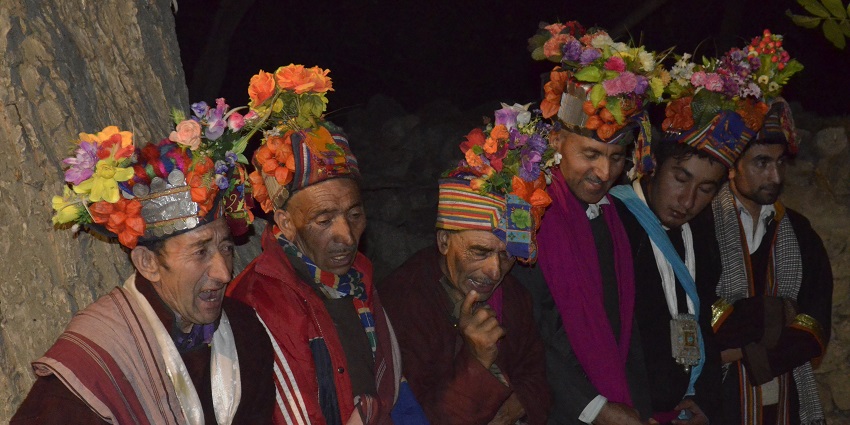
Photo: Vinay.chittora / Wikimedia Commons
Dha Hanu Valley is populated by the Brokpa clan whose roots are associated in broader terms with the Indo-Aryan culture or customs which are very unique. ‘Dha Hanu’ villages are usually called the “Last Aryan Village in India,” the inhabitants there live in their original estates, wearing traditional attire consisting of different floral headdresses with beautiful clothing. Dha Hanu has many rivers and dry waterfalls, plus a green stretch of the walking area where apricot and walnut trees grow and farming terraces can be seen. Adventurous souls should keep this destination on their Kargil tourist places list as it is favorable for trekking as well as photography.
Location: Approximately 163 km from Leh
Best Time To Visit: May to October
Permits: An Inner Line Permit is required for visiting this region due to its proximity to the border
9. Hall Of Fame
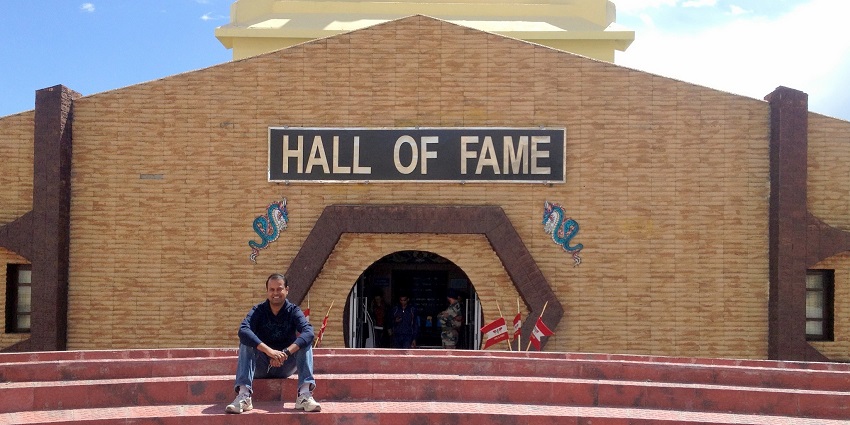
Photo: Vipin Vasudeva / Wikimedia Commons
Founded by the Indian Army, the Hall of Fame is a museum which highlights the great efforts and courage shown by Indians in India’s armed forces to protect the country. The Hall of Fame, includes several sections, such as OP Vijay Gallery, exhibiting the warfare equipment employed in the Kargil War and the outfits and accessories used in extreme weather conditions like Siachen Glacier. The audience can see images along with the soldiers’ letters and notes about their lives which are incredibly subjective. Another distinct section is ‘Lest We Forget’ dedicated to the soldiers who sacrficed their lives for the country.
Location: Approximately 4 km from Leh city on the Leh-Kargil Road
Best Time To Visit: April to October
Timings: 10 AM – 6 PM
Entry Fee: ₹125
Suggested Read: Places To Visit In Ladakh
10. Gurdwara Pathar Sahib
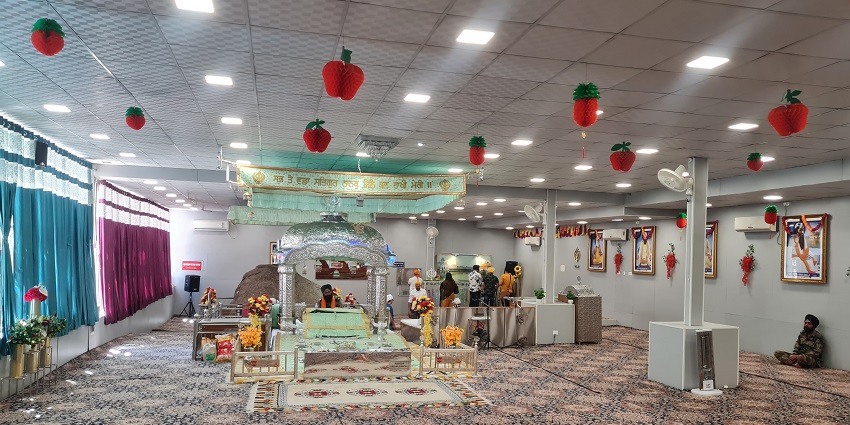
Photo: Jagseer S Sidhu / Wikimedia Commons
Gurdwara Pathar Sahib marks the visit by Guru Nanak Dev Ji, the first Guru of the Sikhs, who is believed to have visited this area in 1517 on one of his travels. The gurdwara is constructed around a large boulder where Guru Nanak Dev Ji’s back imprint as well as the footprints of a demon, who tried to crush the Guru with a rock, are inscribed. Here, people can take part in collective prayers and eat langar, free meals provided to everyone by Sikhism’s important tenets of equality and service.
Location: Approximately 25 km from Leh on the Leh-Kargil road
Best Time To Visit: June to October
Timings: 4:15 AM – 8:30 PM
Kargil is one such place that has history, culture, excitement and nature in perfect harmony. Engaging in places to visit in Kargil, its culture as well as enjoying its beautiful sights will guarantee you come back with memories that are worth sharing. So, plan your trip with TripXL and check out the marvels of Kargil that are endowed in history.
Cover Photo: Jagseer S Sidhu / Wikimedia Commons


 WhatsApp
WhatsApp
 Twitter
Twitter









